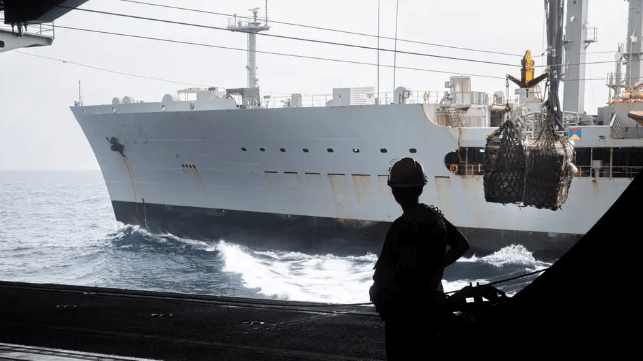U.S. Navy's Afloat Accident Rate Hits Decade High, Led by MSC

The U.S. Naval Safety Command has released its accident numbers for FY2024, and the report shows a rising rate of serious mishaps in the fleet. The number of afloat Class A mishaps - accidents resulting in a fatality, permanent disability, or property damage over $2.5 million - rose to a decade-high number, led by accidents in the surface fleet and a spike in casualties at Military Sealift Command.
To be sure, the statistics suggest that the Navy loses far fewer personnel at sea than on land. The average rate of class A mishaps is many times higher on shore, where personal motor vehicle accidents claim the lives of about 40 sailors a year - the majority in motorcycle crashes. (On average, off-duty motorcycle riding is the most dangerous activity in the Navy.)
While less dangerous on average than driving, going to sea still involves risk. The accident rate afloat has been above average for the last three years: there were eight incidents in 2022, eight in 2023 and a decade-high 10 incidents in 2024. The year's major accidents include the loss of two Navy SEALs at sea off Yemen in January; two other man-overboard incidents; an electrocution accident on a submarine in May; an LCAC collision; and four material casualties aboard MSC sealift vdessels, which - while serious - did not result in injury to crewmembers.

that matters most
Get the latest maritime news delivered to your inbox daily.
The increase in accidents at MSC accounted for the sudden jump in casualty numbers. The division reported no Class A accidents at all in seven out of the last nine years, but the count jumped to four in 2024. These incidents included an underway-replenishment accident on November 15, the grounding involving oiler USNS Big Horn on September 23, an underway equipment casualty off San Diego on August 1, and a flooding casualty on January 21.
The potential for underway casualties may be somewhat reduced next year, since Military Sealift Command plans to sideline 17 vessels due to a crew shortage. The plan was signed on October 30 and confirmed to the press three weeks later. Currently-employed MSC crewmembers from the idled ships will be reassigned to fill gaps in the rest of the fleet; with a planned 95 percent billet fill rate and a lower number of vessels at sea, the potential for afloat accidents at MSC could be reduced by the end of FY2025.
